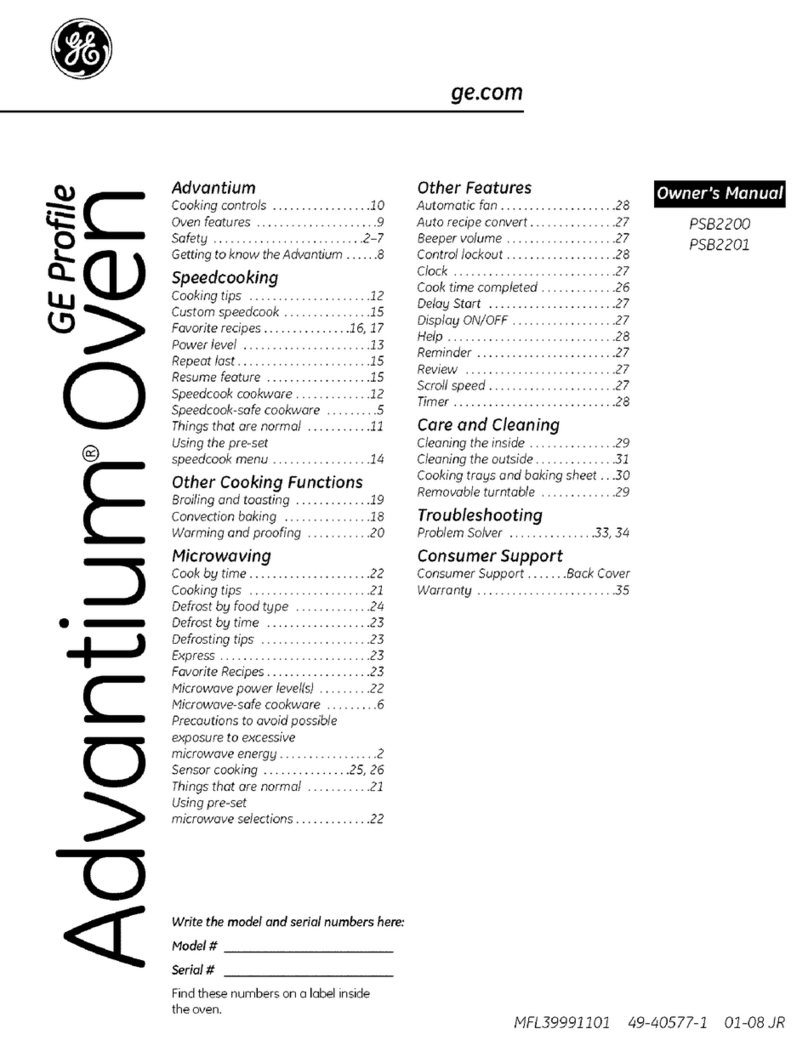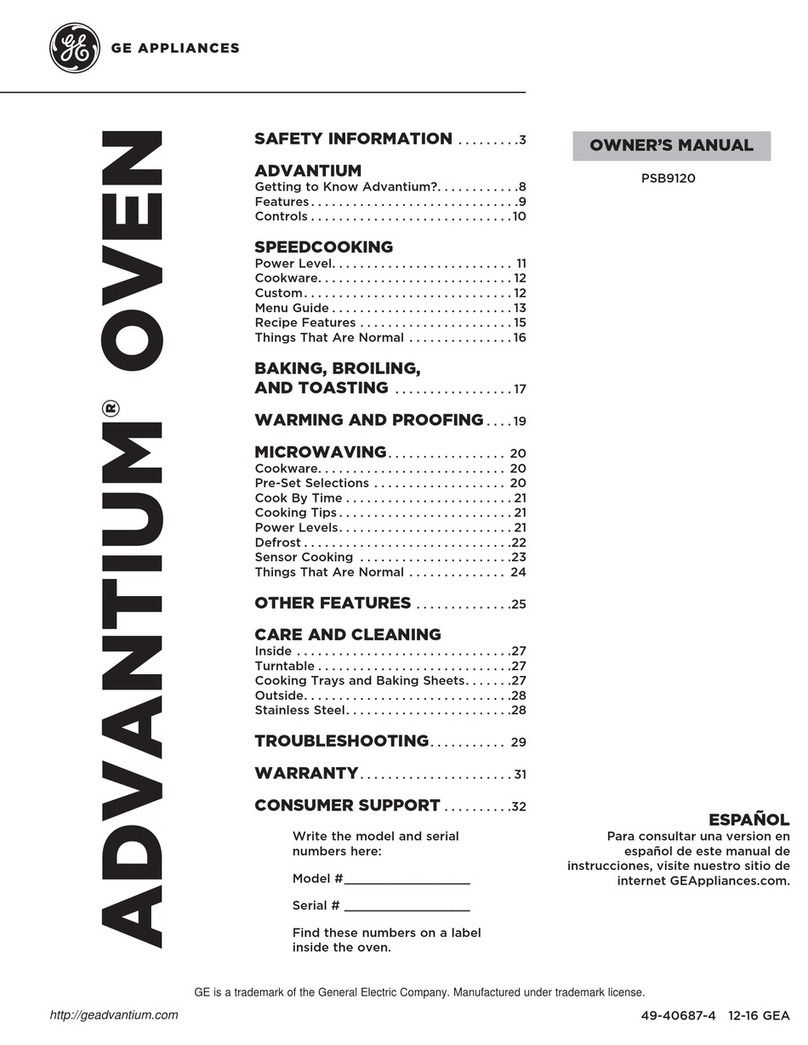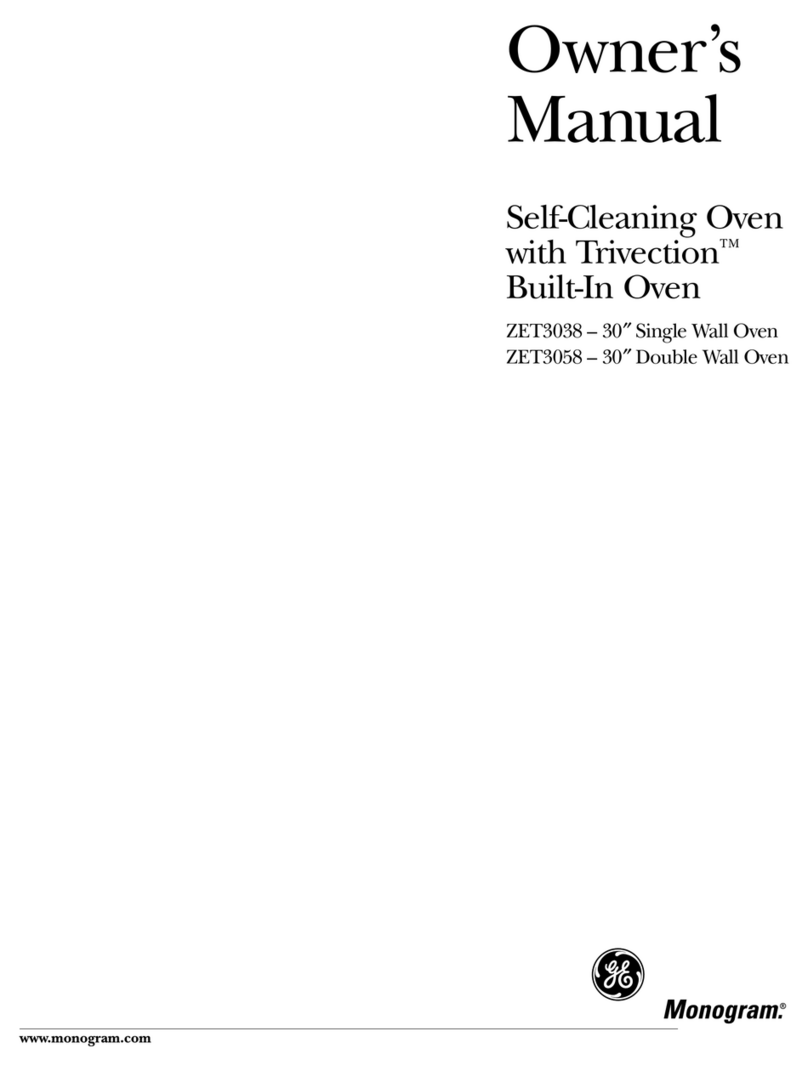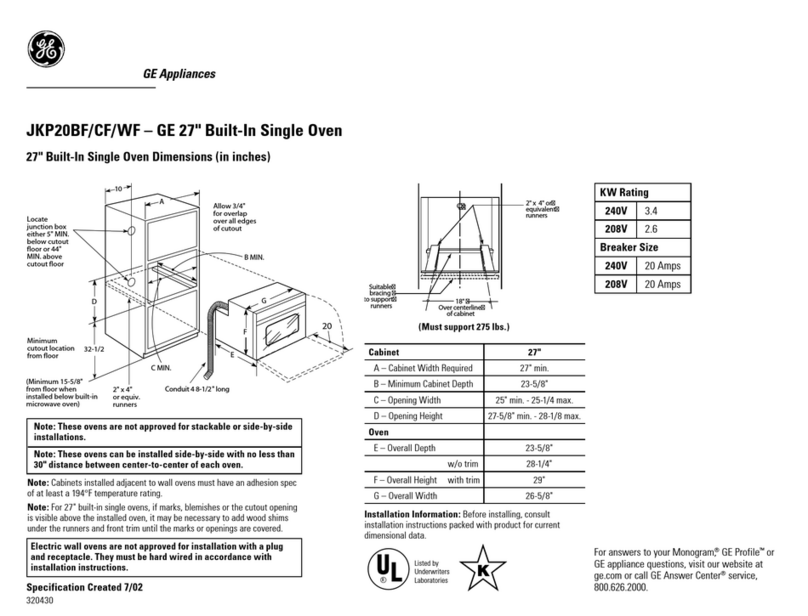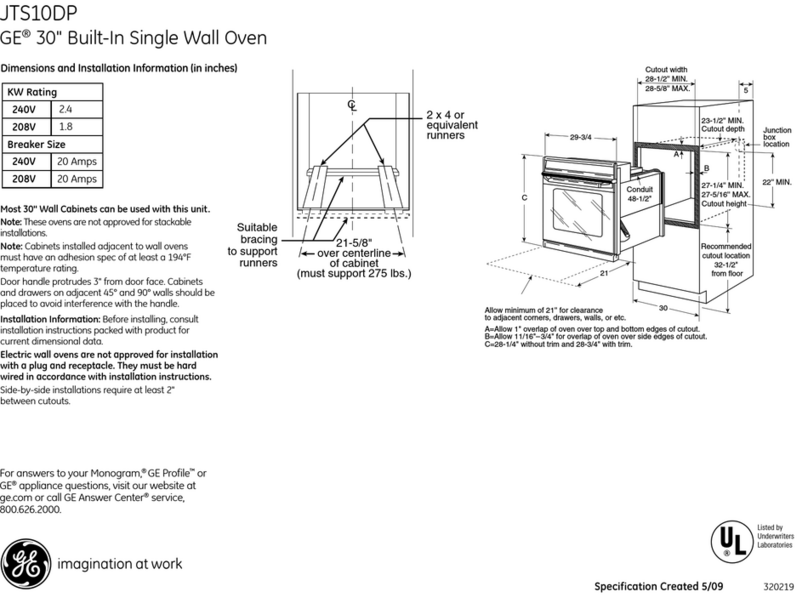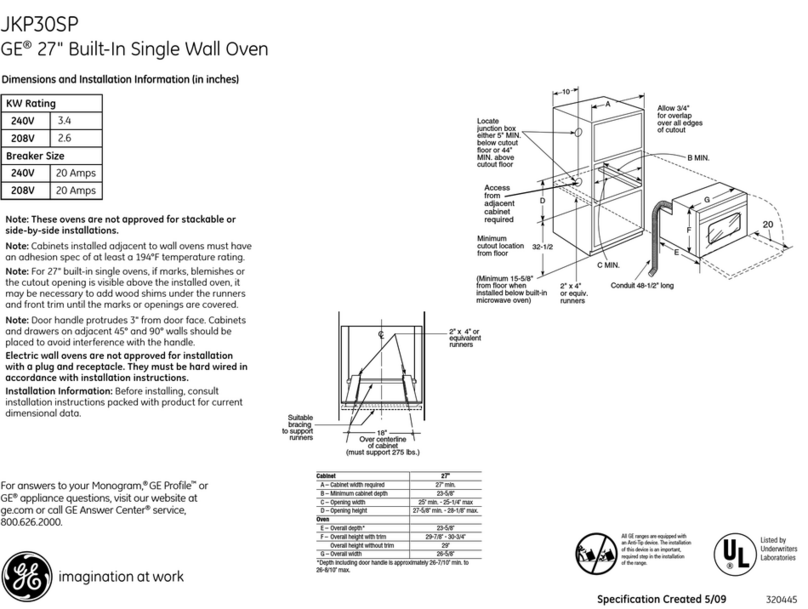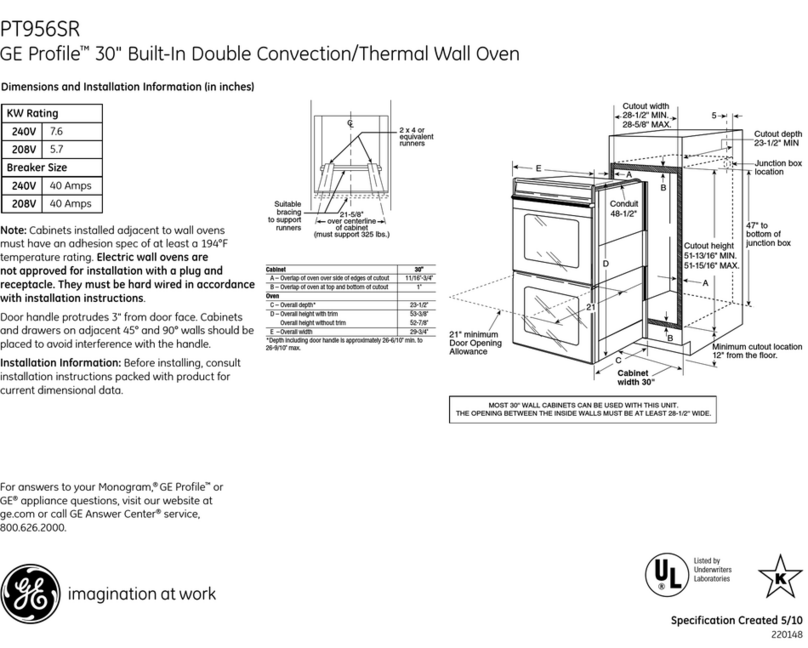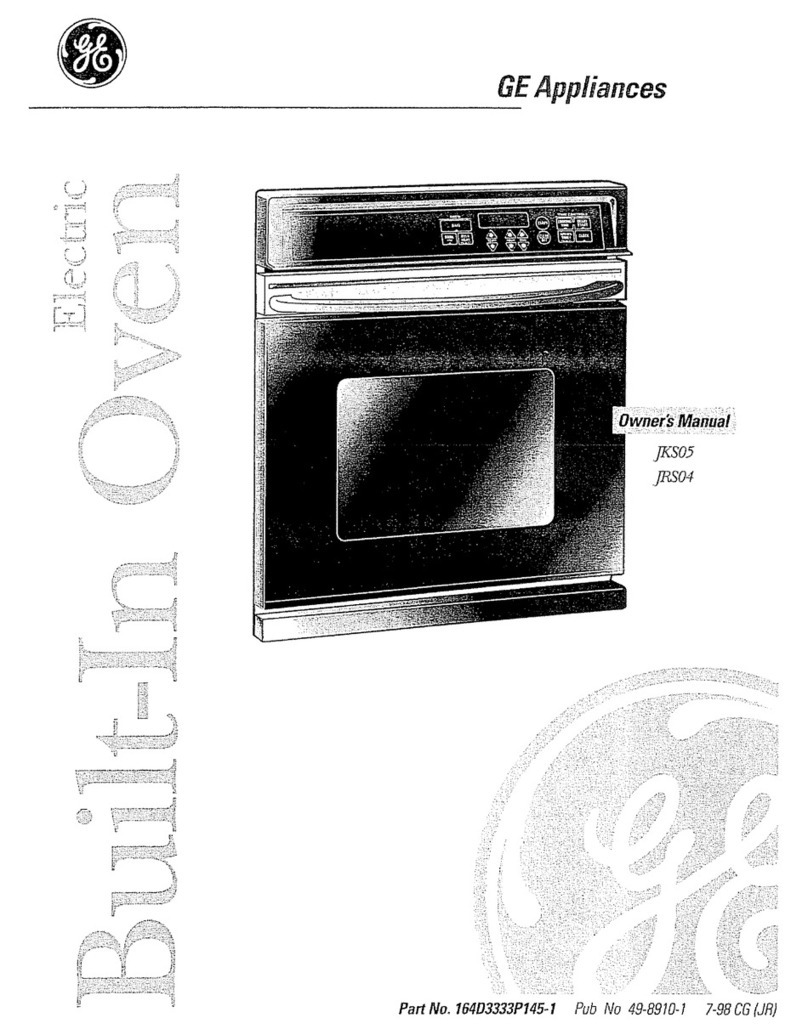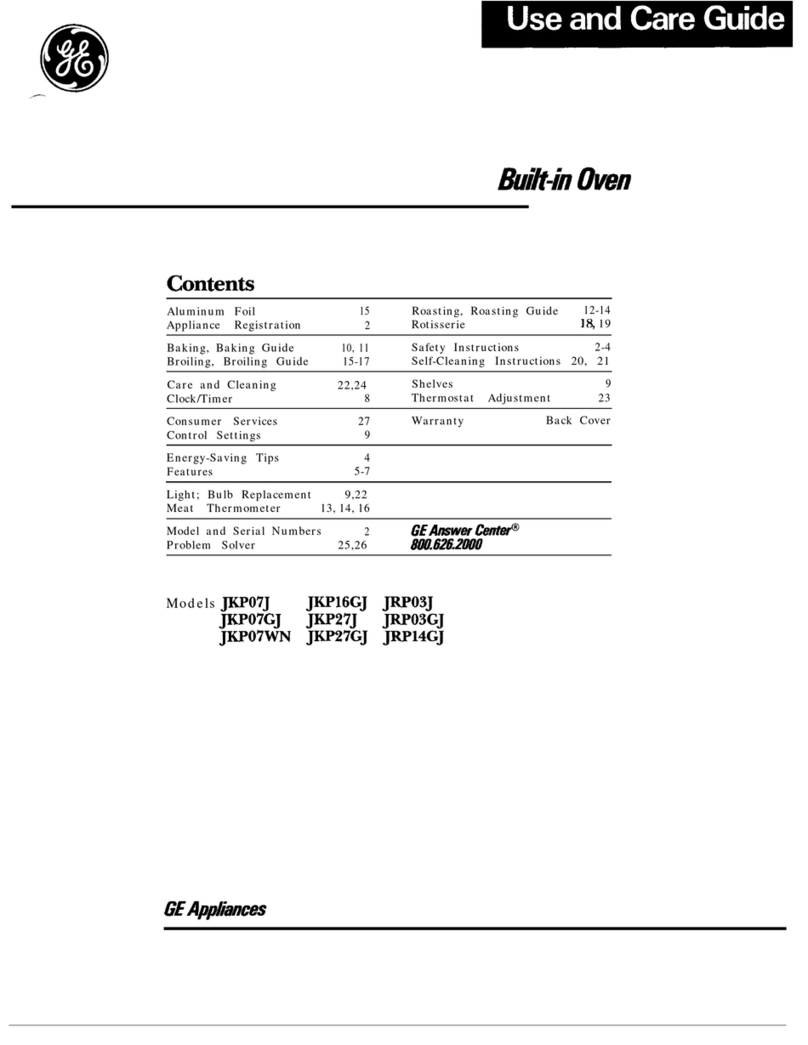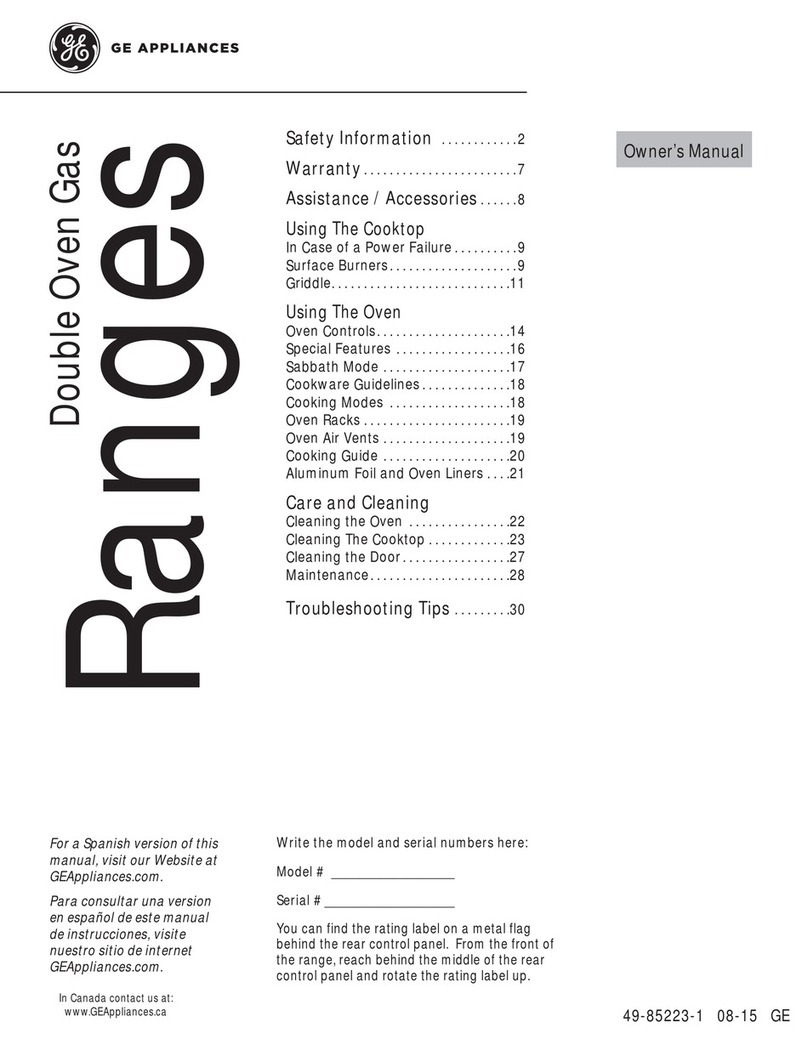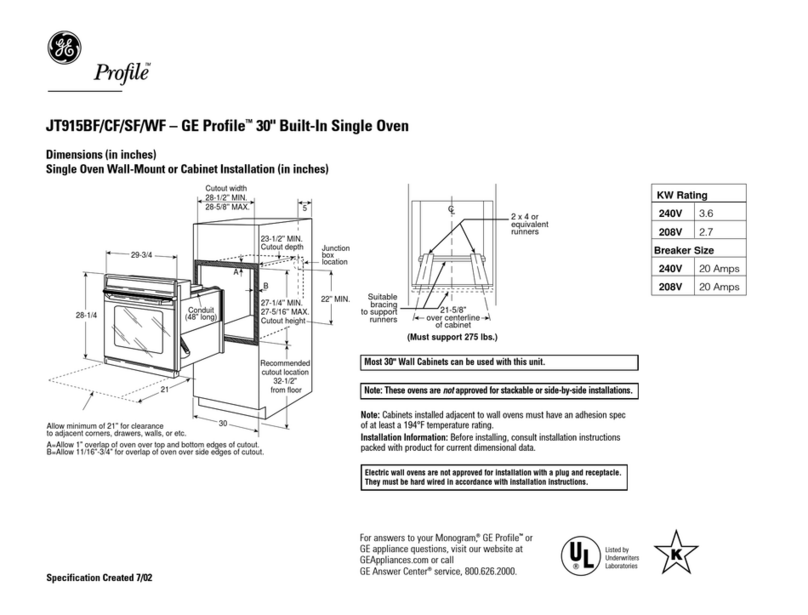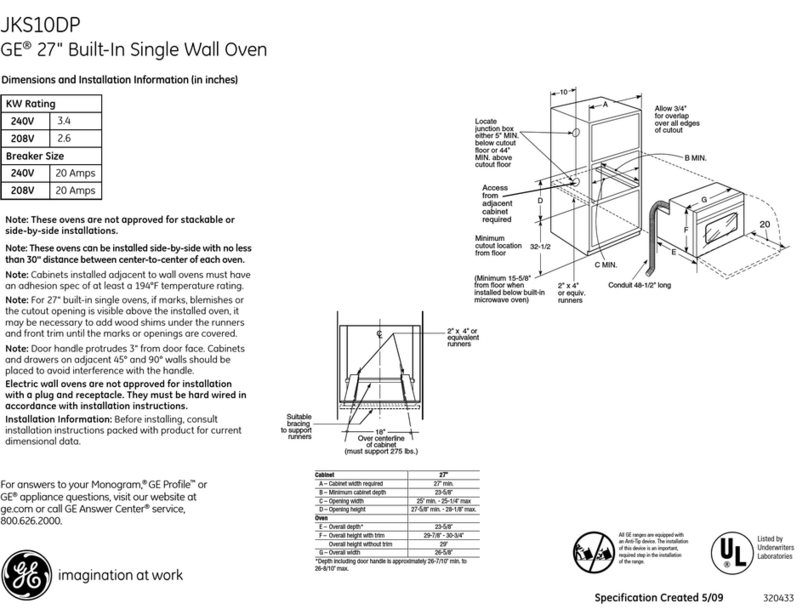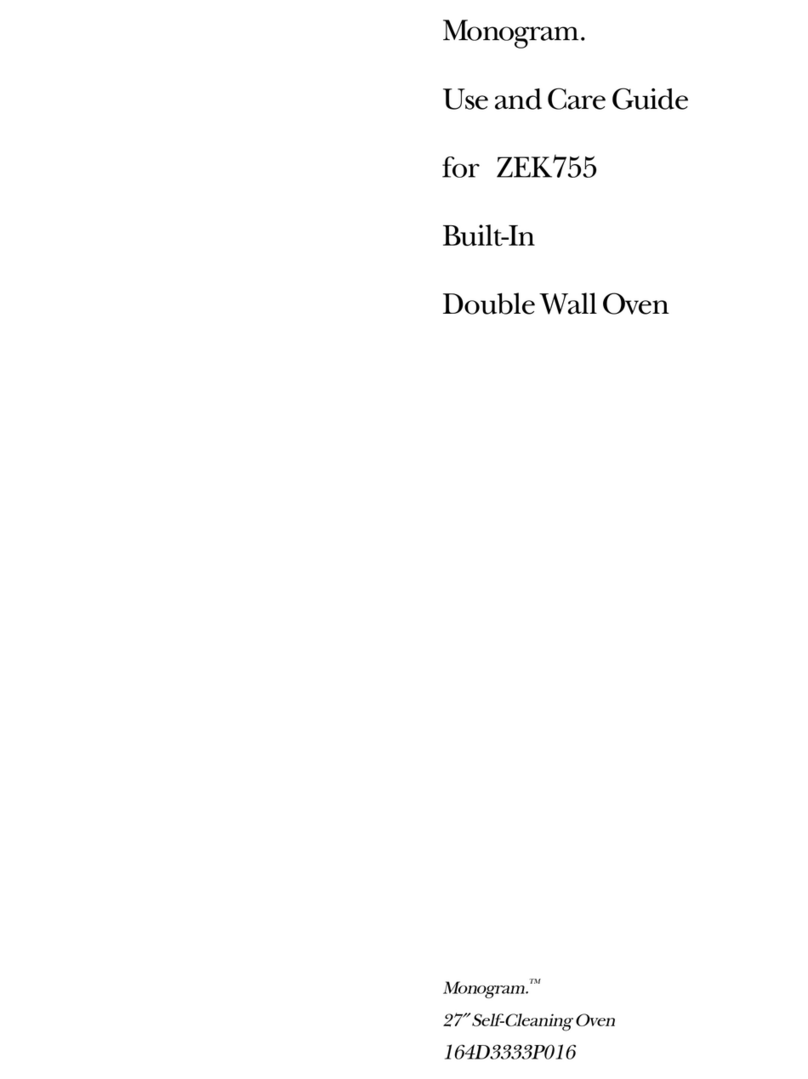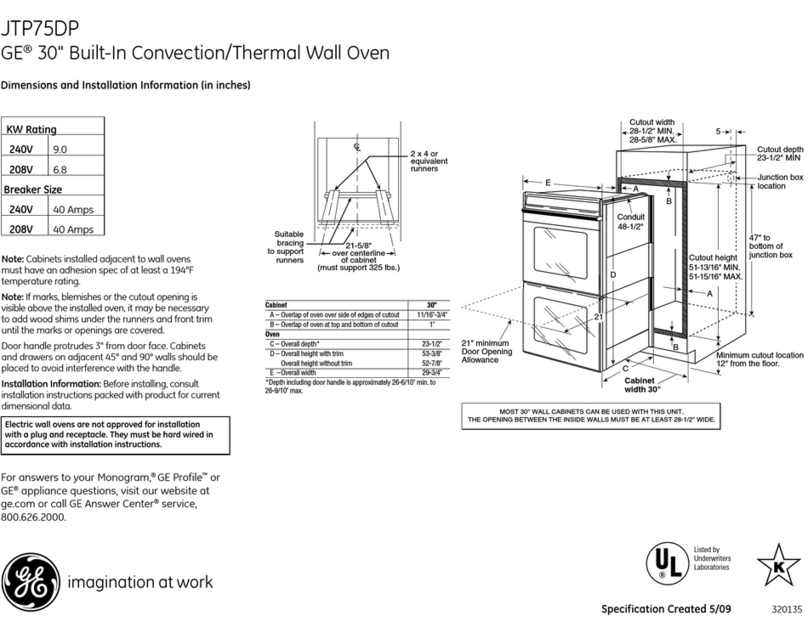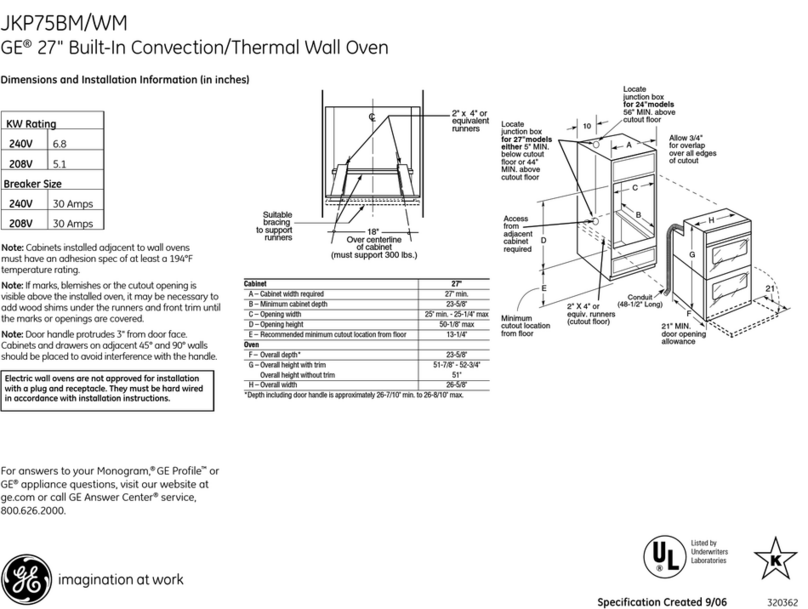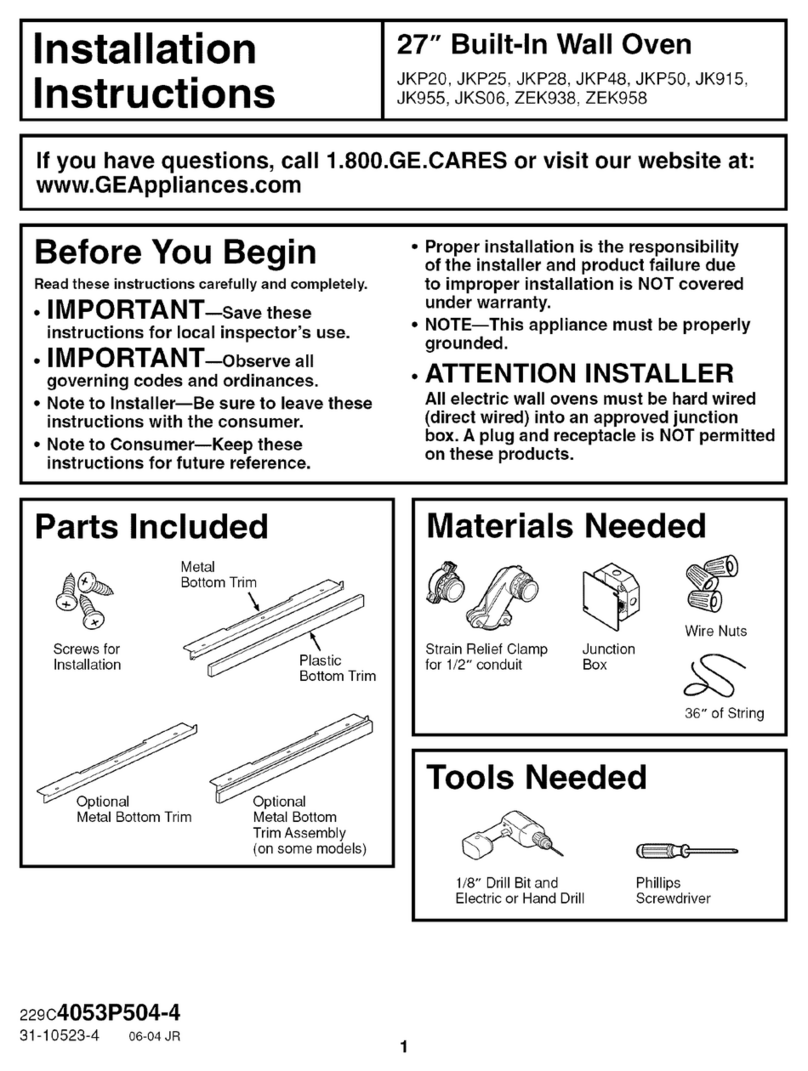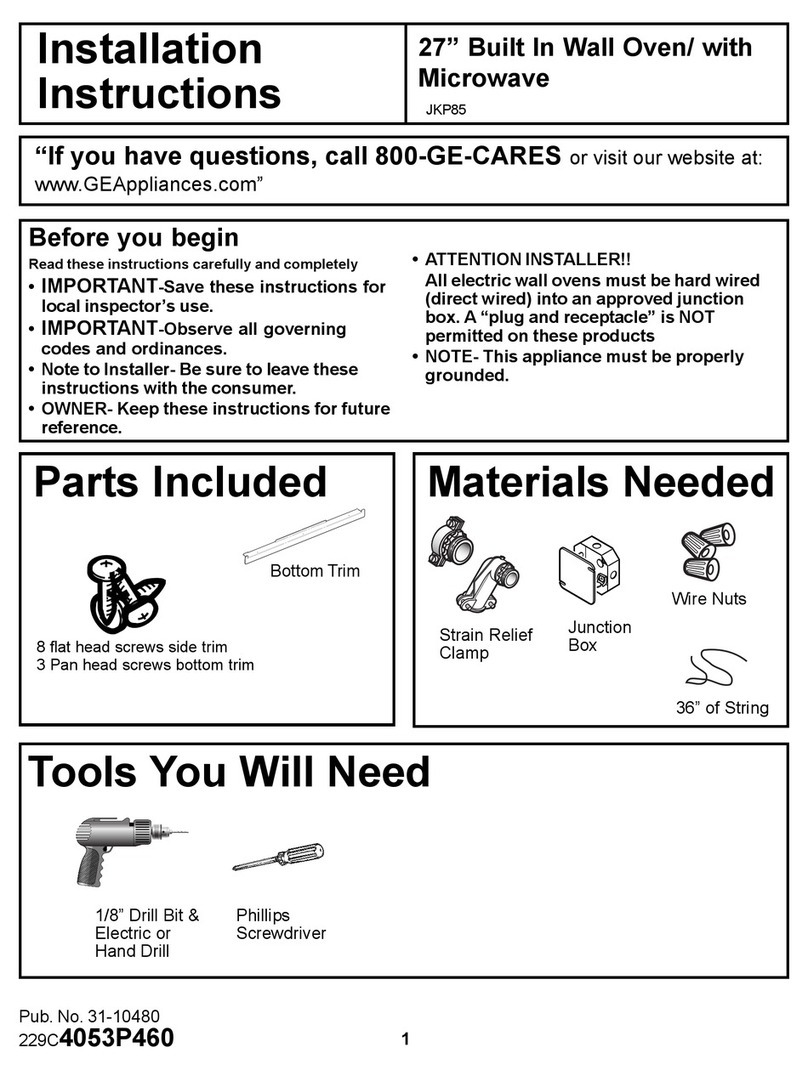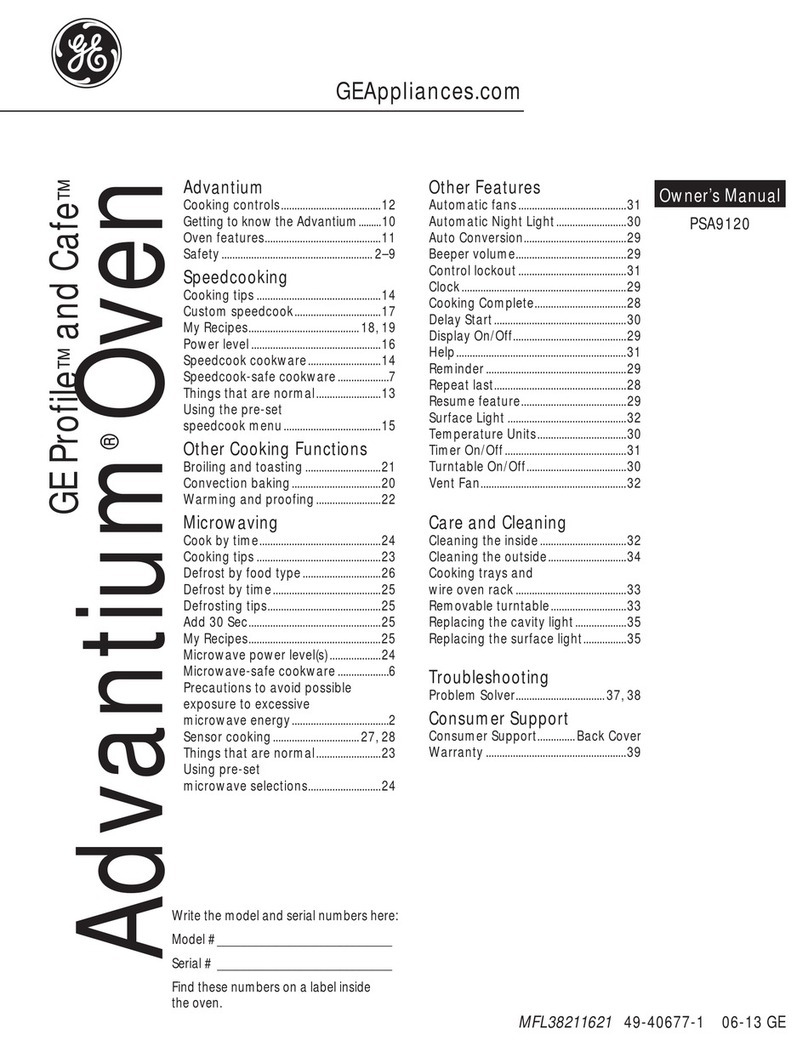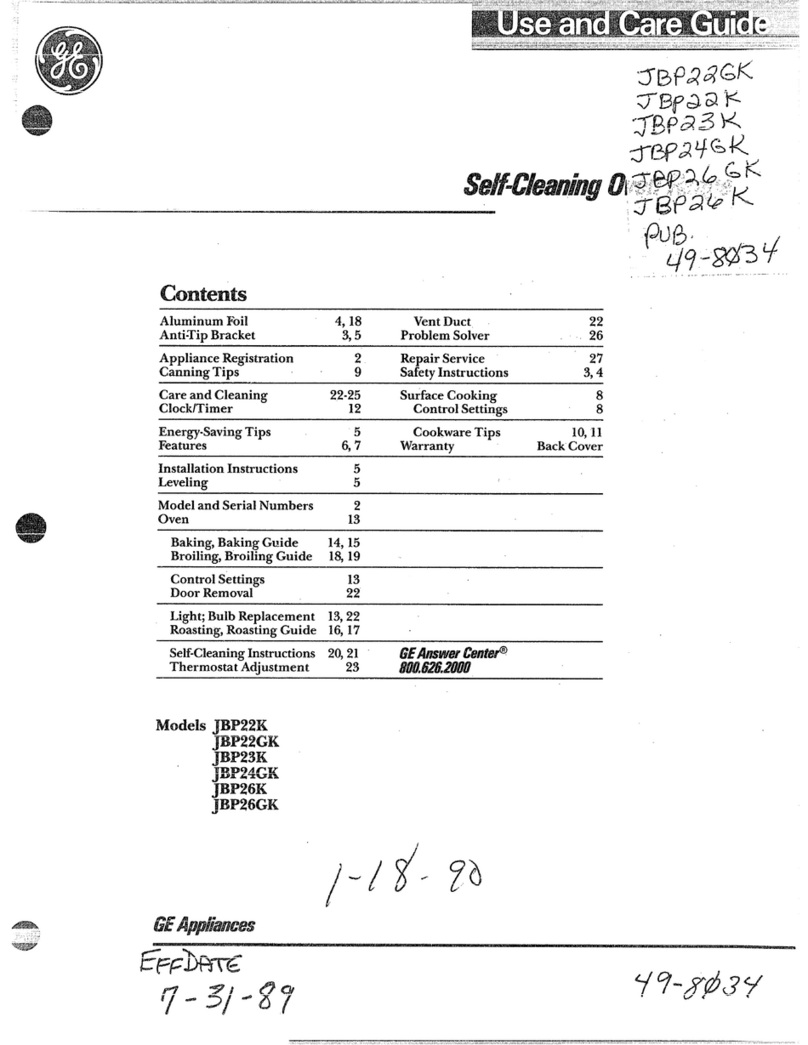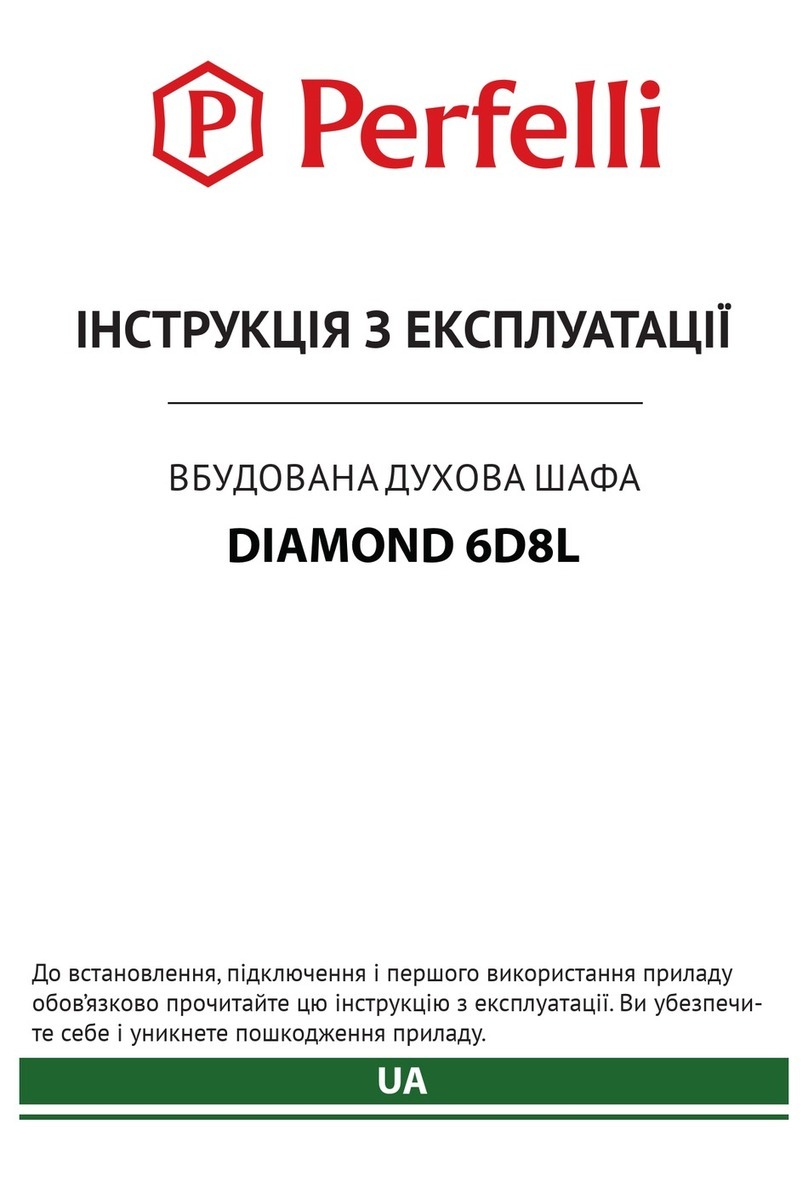
Oven Controls
C, !n Ove;;°de Re!de ......................................................................................................................................................................caf_ ...................... (r,Ln _
High/Low I EnabJe El er " * o 200
1. Convection Cooking Modes: Convection cooking
modes use increased air circulation to improve performance.
The type of benefit depends on the mode. Your oven has
the following convection cooking modes: Bake 1 Rack, Bake
Multi, Broil, Roast and Low Broil Crisp. Select the cooking
mode and then set the temperature to start cooking. See the
Cooking Modes section for more information.
2. Traditional Cooking Modes: Your oven has the
following traditional cooking modes: Bake and High/Low Broil.
Select the cooking mode and then set the temperature to start
cooking. See the Cooking Modes section for more information.
3. Clean: Your oven has two cleaning modes: Self Clean
and Steam Clean. See the Cleaning the Oven section for
important information about using these modes.
4. Proof: Use this feature to assist with rising bread doughs.
See the Cooking Modes section for more information.
5. Mini Knob: Rotate this knob to increase or decrease time
setting and then press the knob to confirm the setting when
using Set Clock, Cook Time, Delay Time, and Timer On/Off.
Rotate this knob to increase or decrease self Self-Clean time
and press the knob to confirm the setting or press the knob to
toggle between self-clean and steam clean. Rotate the knob
to increase or decrease the temperature setting and press the
knob to confirm the setting when using the probe feature.
6. Cook Time: Counts down cooking time and turns off the
oven when the cooking time is complete. Press the Cook
Time pad, rotate the mini knob to program a cooking time
in hours and minutes, then press the mini knob to set the
cook time. This feature can only be used with Traditional
Bake, Convection Bake 1 Rack, Convection Bake Multi, and
Convection Roast.
7. Set Clock: Sets the oven clock time. Press the Set Clock
pad and rotate the mini knob to program the dock. Press the
mini knob to set the time and then rotate the mini knob to
select AM or PM. Press the mini knob to save the time.
8. Timer On/Off: Works as a countdown timer. Press the
Timer On/Off pad and rotate the mini knob to program
the time in hours and minutes then press the mini knob
to start the timer. The oven will continue to operate when
the timer countdown is complete. To turn the timer off press
the Timer On/Off pad and rotate the mini knob till the timer
reads 0:00 then press the mini knob to clear the timer.
9. Delay Time: Delays when the oven will turn on. Use
this to set a time when you want the oven to start. Press
the Delay Time pad and rotate the mini knob to program
the time of day for the oven to turn on. Press the mini knob
to set the start time and then rotate the mini knob to select
AM or PM Press the mini knob to save the time. Set the
desired cooking mode and temperature. A cook time may
also be programmed if desired. This can only be used with
Traditional Bake, Convection Bake 1 Rack, Convection Bake
Multi, Convection Roast and Self-Clean.
NOTE: When using the delay time feature, foods that spoil
easily--such as milk, eggs, fish, stuffings, poultry and pork--
should not be allowed to sit for more than 1 hour before or
after cooking. Room temperature promotes the growth of
harmful bacteria. Be sure that the oven light is off because
heat from the bulb will speed harmful bacteria growth.
10. Probe: Monitors internal food temperature and turns
the oven off when the food reaches the programmed
temperature. Insert the probe, program the cooking mode,
and program the probe temperature. See the Cooking
Modes section for more information. The probe can only be
used with Traditional Bake, Convection Bake 1 Rack, and
Convection Roast.
11. Oven Light(s): Turns the oven light(s) on or off.
12. Remote Enable (on some models):
CONNECTING YOUR OVEN _,,,-_e
Off - Oven is not connected. Open the app then select
Remote Enable to begin the connecting process.
Slow flash - Oven is in discovery mode and looking for a
network.
Rapid flash - An error occurred during the connecting
process.
Solid - Oven is connected to the network and can be
remotely controlled by a connected mobile device when in
operation, but it cannot be started remotely.
REMOTE STARTING YOUR OVEN _,,,-'le
REMOTE
To be able to start the oven remotely, select Remote Enable
and the REMOTE icon will turn on in the display. The oven
can now be remotely started with a connected device.
Opening an oven door or turning off the oven will turn off the
REMOTE icon. The REMOTE icon must be lit to start the
oven remotely. The REMOTE icon is not required to change
the oven settings or to turn the oven off.
After using the oven, remember to verify that the REMOTE
icon is lit if you wish to start the oven remotely in the future.
13. Lock Controls: Locks out the control so that pressing
the pads does not activate the controls. Press and hold the
Oven Lights and Timer On/Off pads at the same time for
three seconds to lock or unlock the control.
49 80711 1
C
m
Z
©
--i
I
rri
O
rrl
Z
i m
O
<
q:)
Cb
O
r-t-
==_
O
O0






